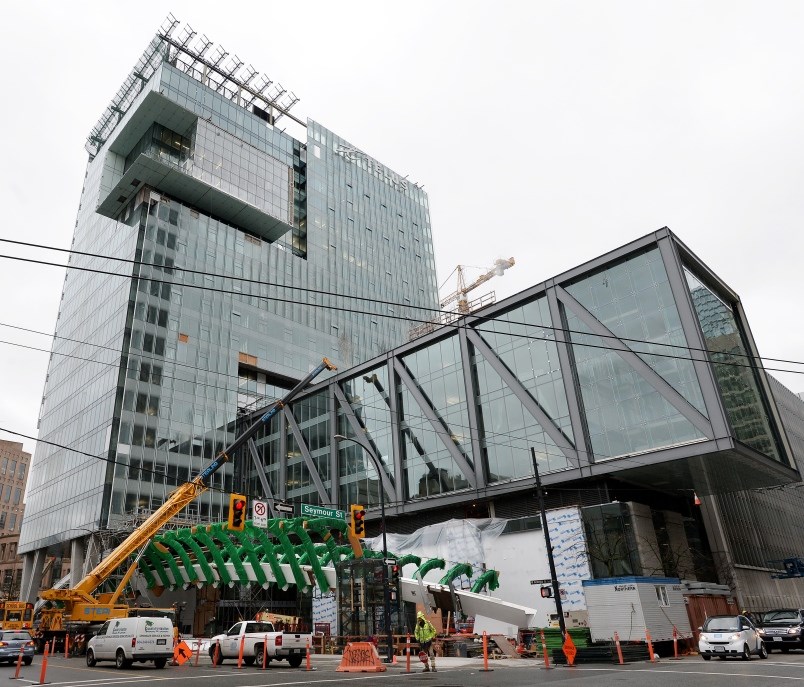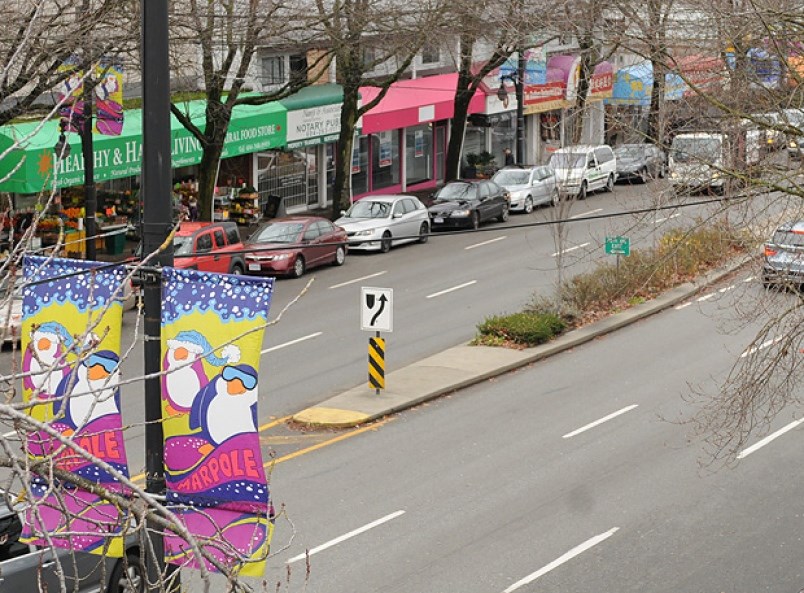Randy Pecarski, the city’s acting assistant director of planning, concedes the sign bylaw isn’t the sexiest of topics, but he thinks the public should get involved in the effort that’s underway to update Vancouver’s.
“Why should people care? Signs can define a place. They can absolutely reflect the character or they can make the character of a place. Think the Las Vegas strip,” he said. “Signs can be dominant or, based on the values of people in different communities, they can be the backdrop or be very subtle and restrained. Of course, in residential areas — the most restricted area we have for signs — they can be almost absent. So signs can have an impact on how you experience the city.”
The sign bylaw, which is roughly 100 pages, primarily regulates signs on private property. It includes general provisions for business signs, as well as regulations for special character areas such as Chinatown, Gastown and the downtown Central Business District.
Vancouver’s sign bylaw is mainly being updated because it’s out of date, having been first drafted in 1989. While it’s been amended over the years, it’s never had a comprehensive reboot, according to Pecarski.
But as the city has grown, technology has changed.
“What we’re finding is the sign bylaw no longer reflects the needs of the industry, so we wanted to take this opportunity to comprehensively review the bylaw, reflect best practices and, of course, update it so we can accommodate signs that take advantage of the new technology out there for signs,” he said.
The existing bylaw, for instance, doesn’t allow digital signs for businesses even though there’s a market and appetite for them.
There are also no provisions for projected signs — to say where they should or shouldn’t be allowed.
“They’re simply not recognized within the sign bylaw. Our sign bylaw is a black-and-white bylaw — you either meet it or we can’t approve your sign,” Pecarski said.
Currently, requests for digital or projected signs are dealt with on an individual basis through a separate bylaw amendment process that requires a public hearing and council approval.
Pecarski said one of the objectives of the review of the sign bylaw is to simplify it and make it more understandable in order to reduce the number of times the city has to go to appeal or to amendment.
In recent history, for example, plans for Telus Garden’s giant media screen required an amendment to the city’s sign bylaw, including a public hearing.

The city’s review is being done in two phases. The first phase focuses on business identification signs and their needs.
Individuals can share their views through an online survey on different types of signs, the ways they’re used and their impact on the city. The survey is on the city’s website at Vancouver.ca/sign-review and is available until Sept. 18.
The second phase of the review, which will take place in 2017, will look more broadly at what the city should look like from the perspective of the kinds of signs that are allowed or not allowed, and how much advertising should be permitted in the public domain. That is, the role of billboards, digital and transit shelter ads, as well as other types of ads.
“In the survey, we’re asking some very general questions about [participants’] values and their opinions about the broad issue of signs and advertising in the city, but the focus is very much on amending the bylaw so we can fix and improve the provisions for business signage,” Pecarski explained. “Phase two will take a look at advertising and digital and digital billboards. That will be a broader review.”
He wouldn’t guesstimate how many signs there are in the city, but pointed out every small business probably has a minimum of three or four signs — an awning or canopy sign identifying the business, they might have a sign in their window and they might have a sandwich board.
“The other thing we’re trying to make clear is which signs we’re regulating. We’re not out to regulate every single sign in the city simply for that reason," Pecarski said. “The signs we’re worried about are signs that are visible from the street and that make a difference to your experience as you walk, drive, take the bus or cycle through the city.”
Once the survey portion of the review is finished on Sept. 18, staff will take a look at results and embark on stakeholder discussions in the fall.
Pecarski is aiming for an updated bylaw to address business signs in December. That will end phase one, while phase two will be completed in 2017.
@naoibh



